Challenges & benefits of life on the edge of water and land
When people think about frogs, they think about jumping. The frog’s jump is mostly used to escape from predators and is quite unique among animals. The hind leg muscles deliver the power to jump and can make the frog launch itself over a distance up to 20 times its body length in a split second. The long hind legs enable a longer acceleration time, as the muscles can only propel the body as long as the legs touch a solid surface.
The vertebrae and leg bones are extremely heavy and hold thick muscles to stabilise the body, comparable with the neck vertebrae of Gannets, preventing the body to curl up due to the forces associated with the jump.

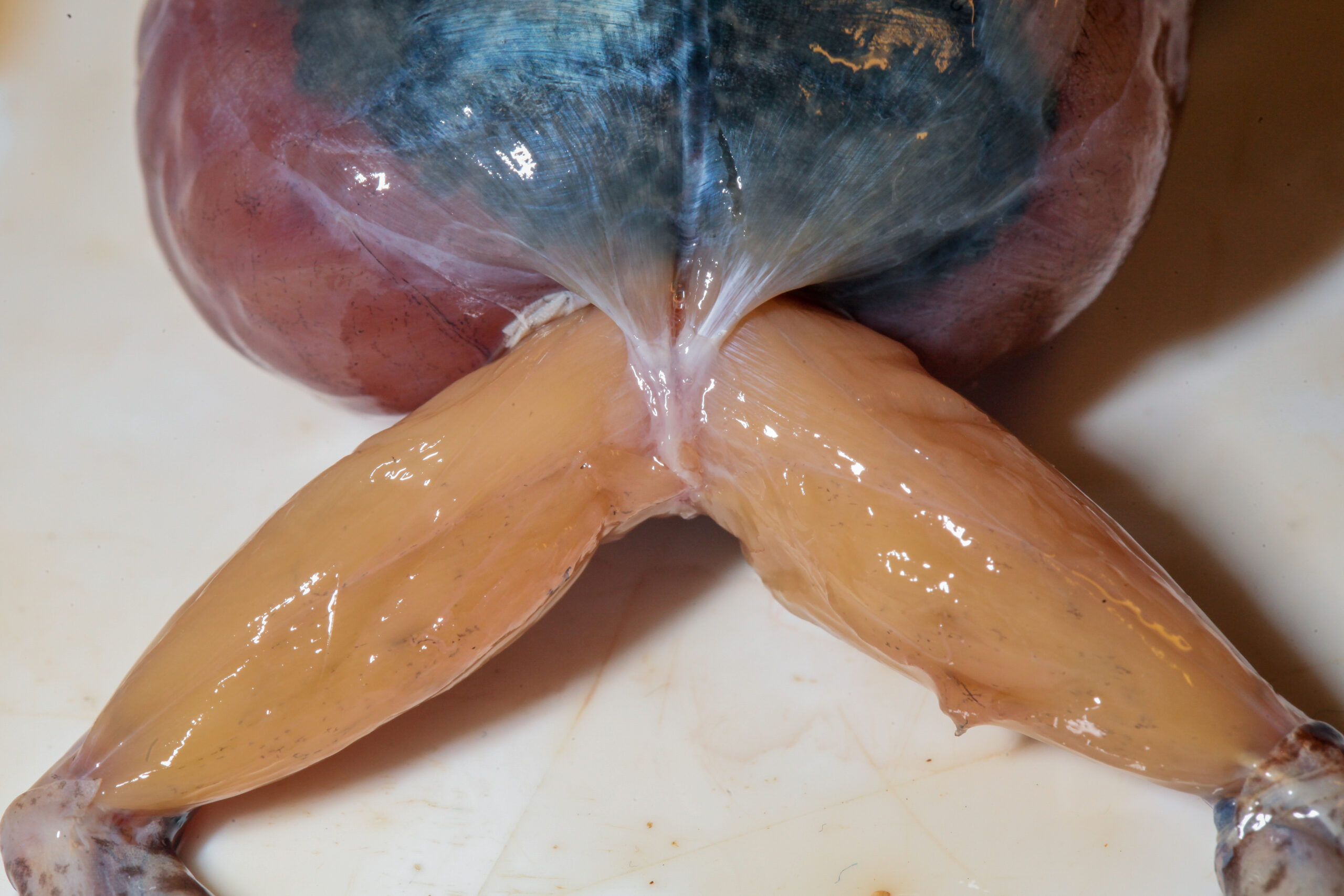
As frogs are mostly sit-and-wait predators, which only jump sporadically, the muscle tissue is of the “fast twitch” type (pale-coloured tissue), designed to deliver high power in a very short time.
Back hinge
A special joint between the spine and the pelvis, unique to frogs, allows them to use it as a hinge when jumping, lining up the body and hind legs. Although it does not add much to the jumping power, this reduces drag but more importantly body rotation, which greatly increases the accuracy with which frogs can land.
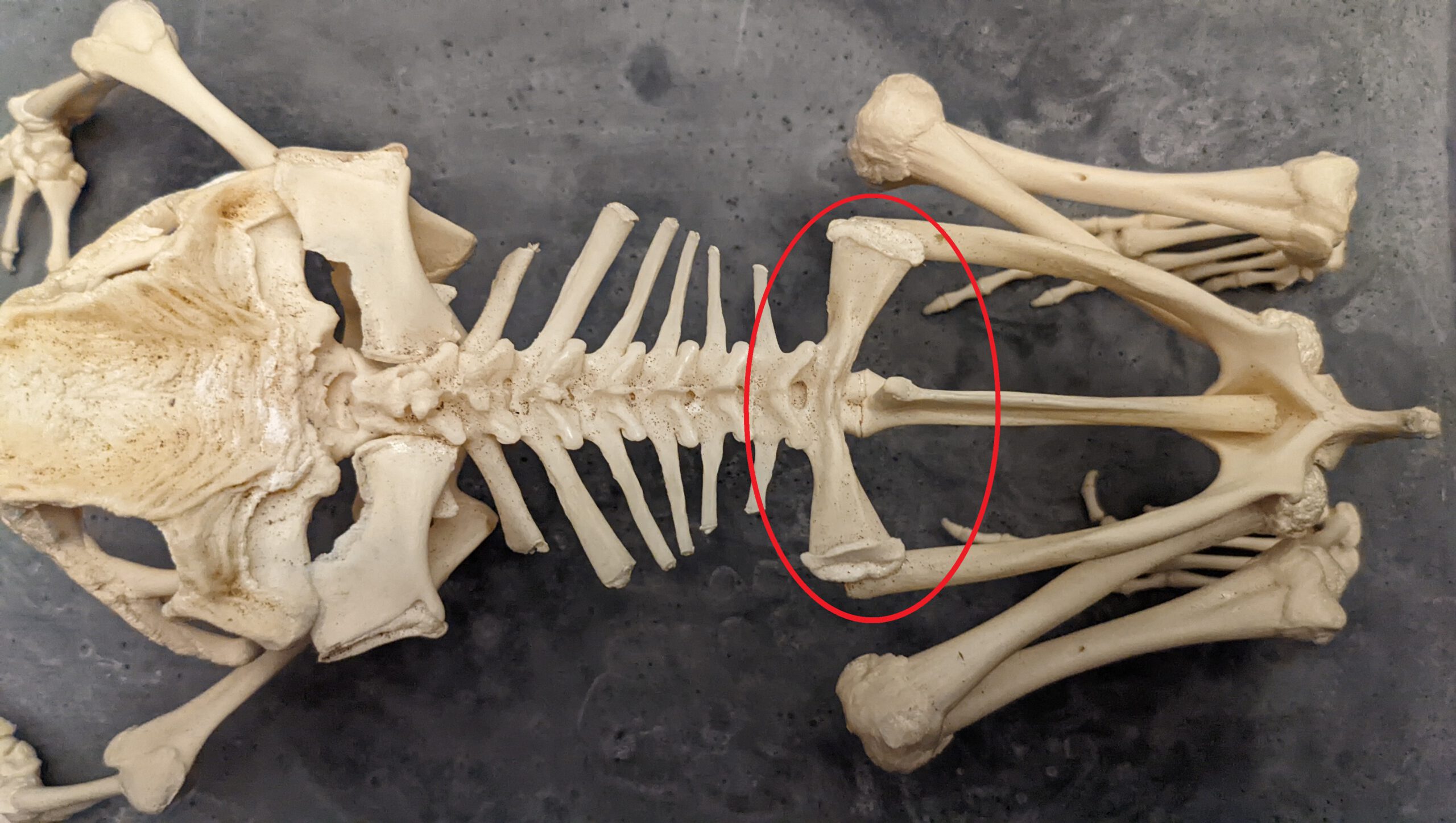
Most tree frogs move around by jumping from one branch or leaf to another and probably rely much more on the jumping accuracy obtained by this joint than water-bound frogs, for which it is less important where exactly they land when trying to escape a predator.


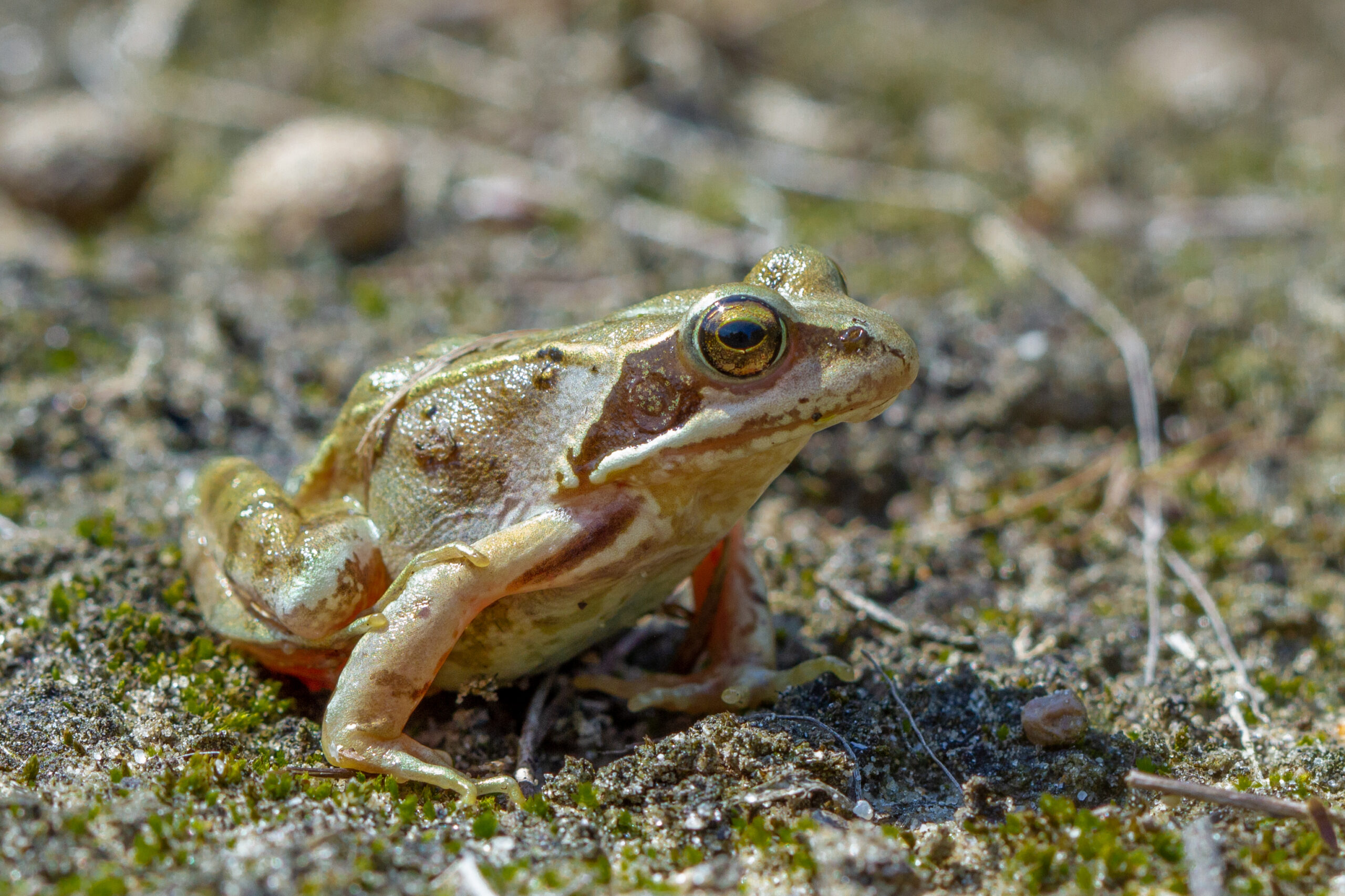
Shore life
Living a life on land and in water forces animals to handle a range of challenges related to both types of environment. Most amphibians, like frogs and salamanders, face such challenges, but can also benefit from living in both terrestrial or aquatic environments. Although frogs deposit their eggs under water and adult Common frogs may reside on the bottom of a water body during winter, Common frogs spend most of their time on places where land meets water. On the shores of ponds and lakes, alongside streams and ditches, but also in forests and grasslands, they hunt for invertebrates.
They detect a snack upon eyesight with their eyes placed on top of their head, allowing them to remain unseen under water, ambushing prey that pass by unknowingly of any danger. A prey is caught by flipping the tongue forward lightning-fast once it is within reach. Hence, the tongue is placed in the outermost front of the mouth and stretches forward and back like a bungee cord, restraining the prey instantly with very sticky saliva. When extending the tongue, the eyes are closed, probably to protect any potential damage to the eyes by the prey as it is bungeed back towards the mouth. A heavy-built breastbone connects to the tongue with thick muscles, which probably help retracting the tongue at high speed.

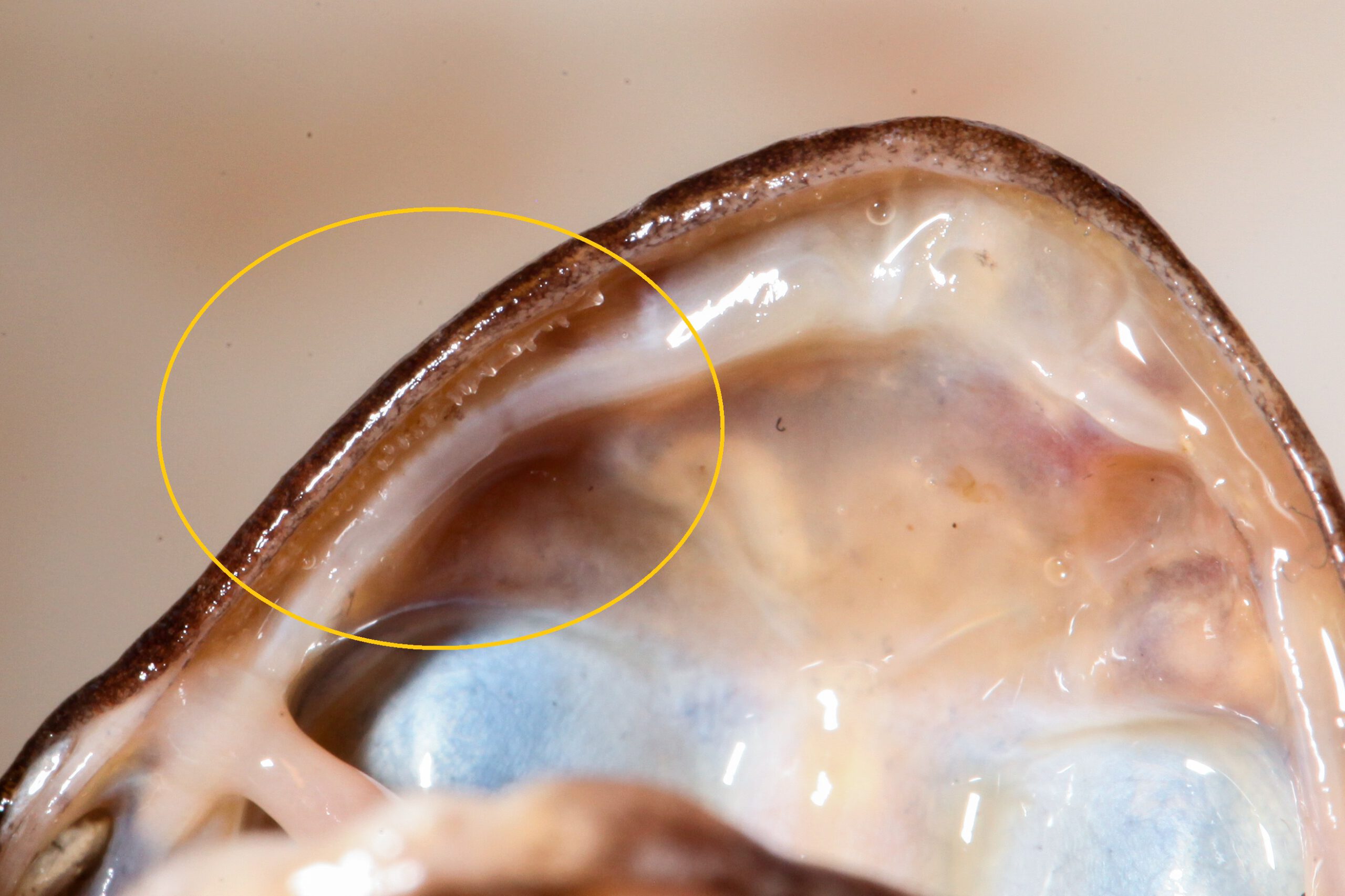
A ridge of small teeth in the upper mandible provides grip to hold the prey when it enters the mouth. A remarkable feature of frogs is that the eyes help swallowing prey by pulling the eyes into their sockets, narrowing the roof of the mouth and therewith pushing the food down the throat.
Older than dinosaurs
The adaptations to literally live an amphibious life on the edge go way back in time and evolution, which once unlocked the doors to a terrestrial lifestyle for vertebrates. Amphibians were the first from their fish-like ancestors to colonise land, long before dinosaurs lived. The primary challenge of living both on land and in water is the ability to take up oxygen from the environment in both systems. The gills (which are still present in larval stages) were slowly replaced by functional lungs, essential to effectively capture oxygen from the air while crawling about on land. But, an alternative adaptation for gills was needed, as gills quickly dry out on land, which renders them useless under water. Breathing through the skin was the solution for this problem.
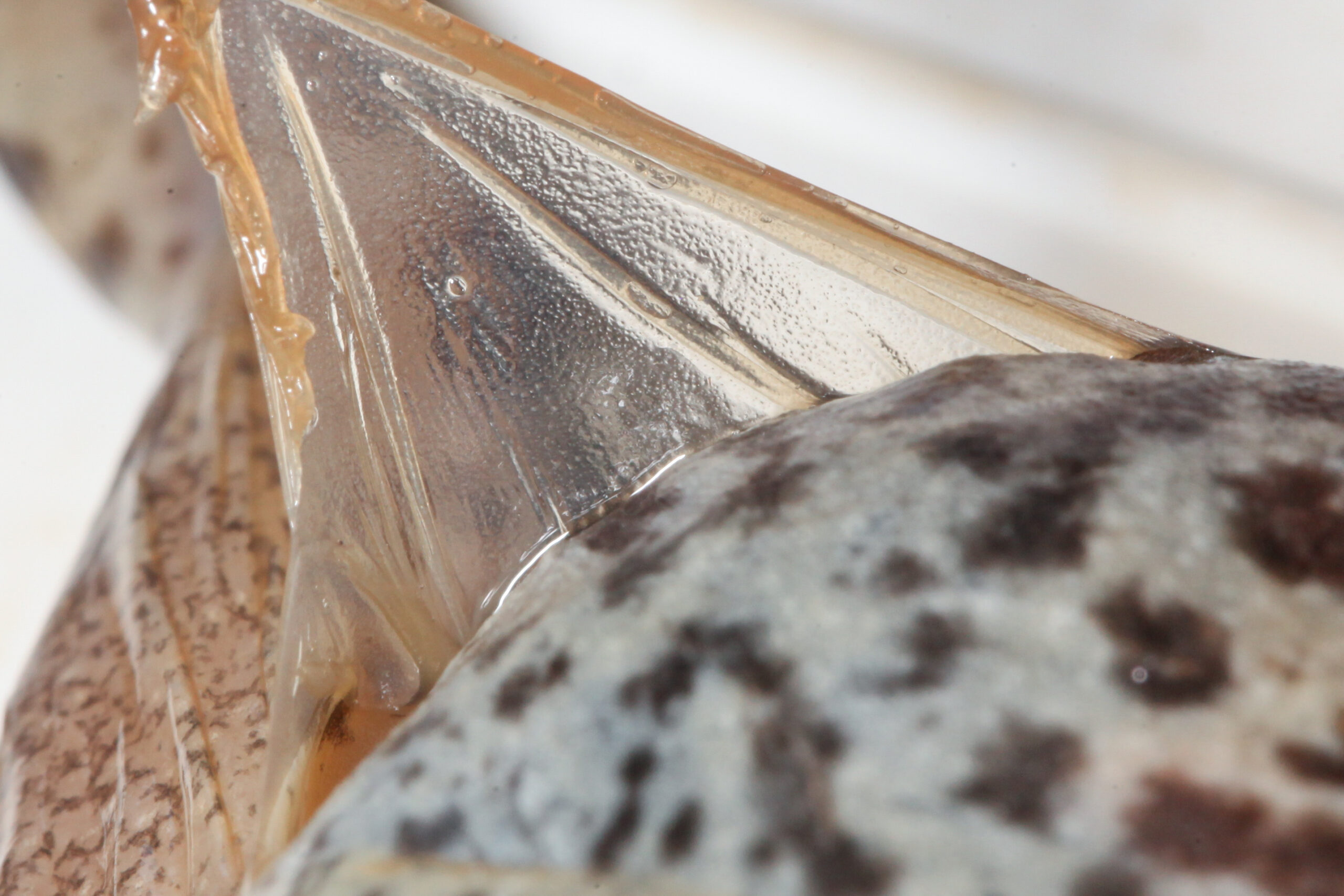
Skinny skin?
So, amphibians developed a unique way of breathing: partly by buccal pumping by the mouth floor towards the lungs and partly through their skin. Oxygen is absorbed from the water through very narrow pores in the skin, which is very thin, to enable this breathing technique. The oxygen enters the blood stream via very small blood capillaries just below the skin surface. Up to a fourth of the total oxygen demand can be obtained this way! Having the ability to use two ways of breathing makes amphibians especially suitable for living on land and in water. As they do not breath by chest movement, frogs, and most other amphibians, do not have ribs.
Outside the water mucus glands in the skin keep the skin moist, which enables them to use dermal breathing even when moving about on land. Besides oxygen, water can also be taken up through their skin, which allows frogs to hydrate without drinking.
Continue reading

One of the main reasons for common frogs to enter the water is the reproductive season, as the eggs and larvae only develop in water. Males form choirs around mating ponds and produce a call that is amplified by inflating the skin on their throat and cheeks. Females, with their body filled with eggs ready to be laid after they have matured in the reproductive tract during the previous winter (photo), are attracted by these calls.
Once a female presents herself, a male crawls on top of the female and holds her with his front legs until she starts laying. Males fertilize the eggs by spraying sperm over them while or right after being laid by the female.
Longer front limb
The females are overall larger than males, most likely to store the enormous number of eggs, but the males appear to have a relatively longer forearm. Most probably this adaptation relates to the submission-hold that males apply on a female, allowing them to hold a firm grasp around the female’s body.

This reproduction strategy implies that females have to invest a lot of energy into their reproductive organs in order to produce eggs and mature them, even in winter, when the adult is hibernating. This is a situation very similar to that in Adders. Noteworthy, like in adders, the male frogs in our studies showed quite some fat reserves just after hibernation, whereas the females did not.

